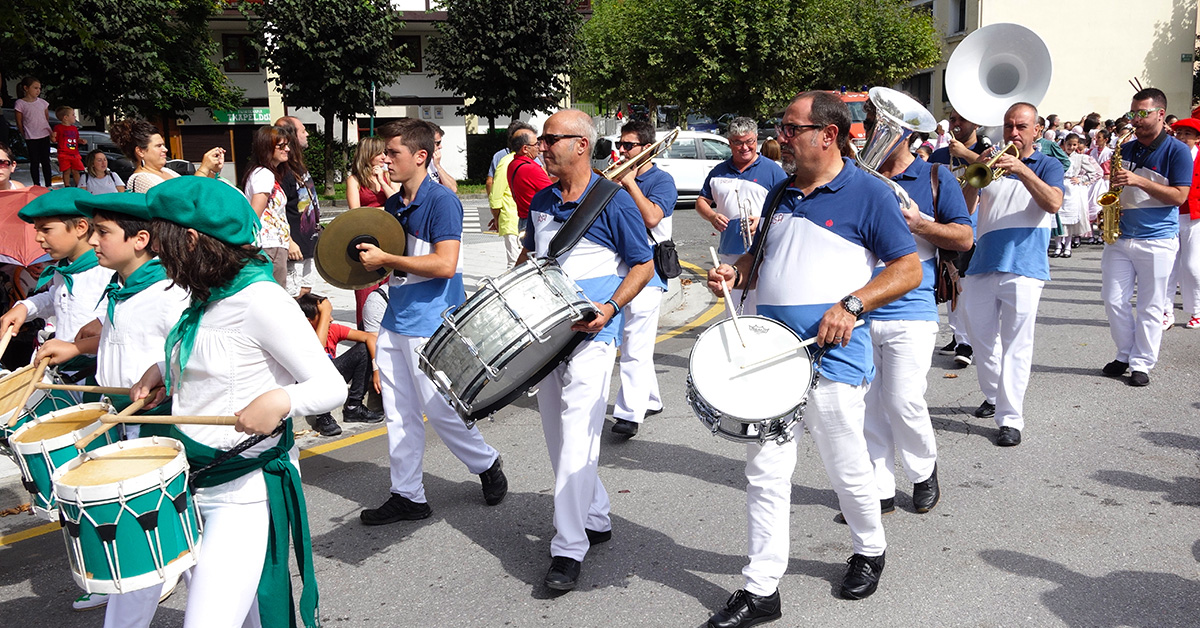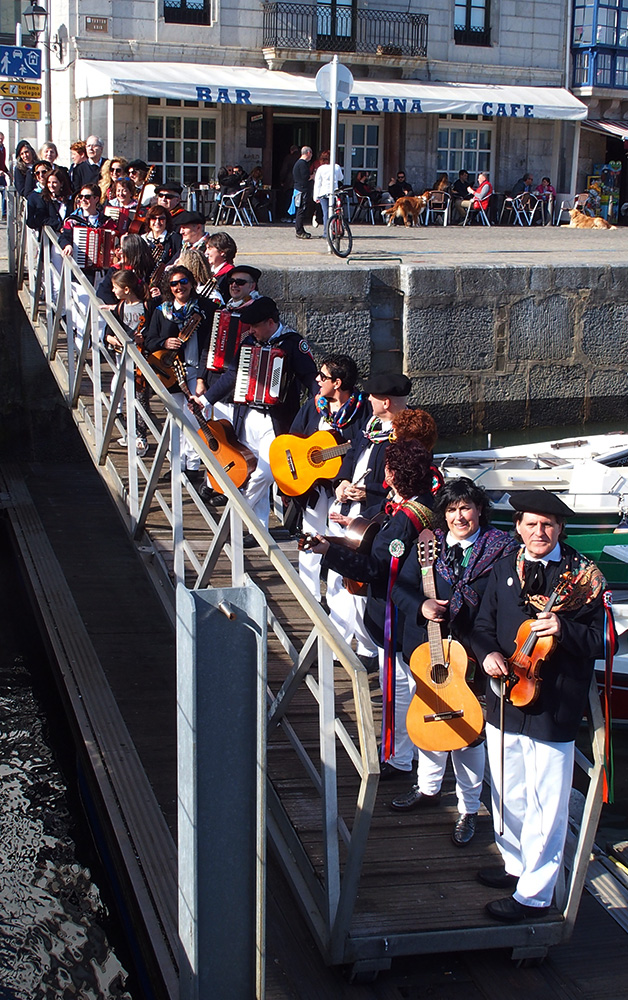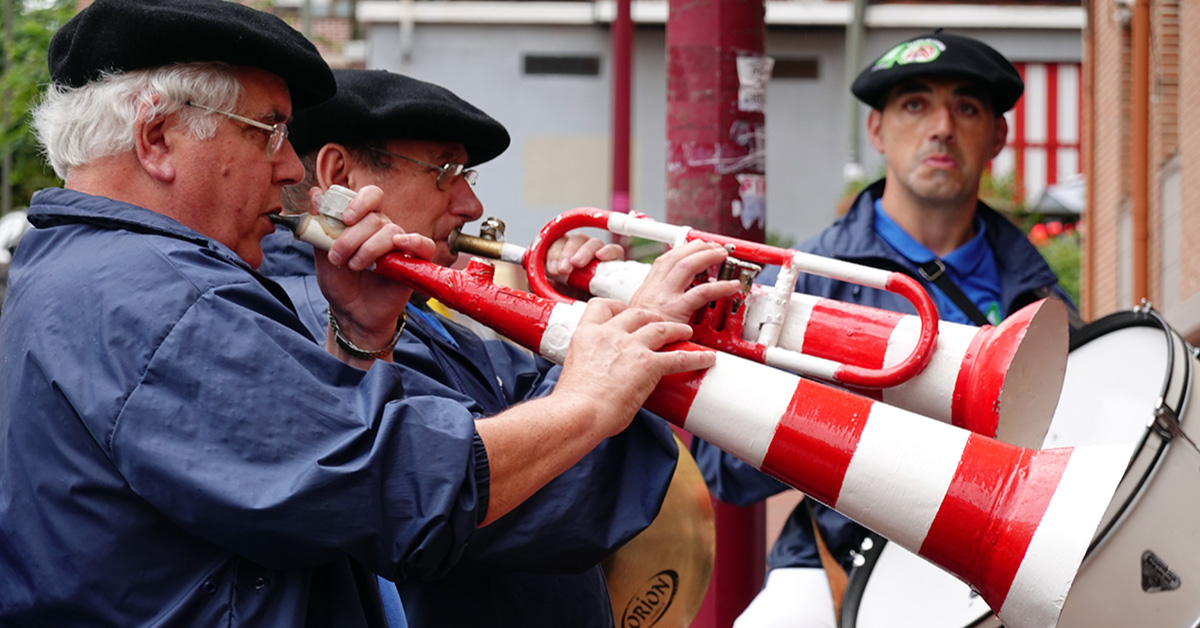Basque ethnography at a glance
We may not be aware due to the current inertia of daily life, but music is something that is usually at the centre of entertainment and, particularly, at festivities, weekends and different celebration.
Even though the need to play melodies, for different reasons, can be traced far back in time, we can basically differentiate between two uses for music performed in the street: entertainment or leisure and enjoyment; and ritual (religious and/or secular). Furthermore, whether travelling or mobile, on the one hand, and fixed or static, on the other, it coincides with the presence of the people in the spotlight, the musicians: who can be literate and illiterate; enthusiasts, professionals and beggars; instrumental or with voice accompaniment; locals or incomers.
The administrative status of the location, which can vary in time and in space, along with the degree of importance and size of the community, have adversely affected the enjoyment of the music. A tambourine player in a small town or neighbourhood who provided solace and a rhythm for dancing on Sundays is not the same as a rondalla [ensemble of stringed instruments] or estudiantina [student band] during Carnival, or the municipal band that played popular tunes for an expectant crowd in the town square on a public holiday.
The oldest information available – speaking in general and specific to a time – reveals that the xirulari or flute player, the dulzainero who played the Spanish double reed instrument, and the gaiter or bagpiper, whether paid or performing for free, provided the musical entertainment for the festivity or event. As regards the travelling aspect (whether or not static), the aim was to attract a crowd, mainly young people, apart from the merely ritual = religious one.
At different points of history, music, accordion or jazz bands led to the decline of the flute and other instruments to a certain extent. Strangely enough, as things go out and come back in fashion, periods of popularity were followed by hard times.
In around the 1950s, the cardboard bands emerged at the heart of all this. Both banks of the Bilbao river estuary were one of the areas of the country where they enjoyed greatest success. The low cost involved – even though the instruments, such as the percussion ones, were not all made out of cardboard – at a time of relative hardship explains the popularity of those groups, which recalled how bird whistles and rolling paper were made to produce sounds in the past. They had practically all disappeared by the end of the 20th century, due to the unstoppable push of the charanga dance band. Only some people harping back to the past have tried to resurrect them.
We have moved from the flute player travelling from farmstead to farmstead, to the military marching bands, and, from there, to the indomitable cardboard bands, brass, charanga dance, trikitixa, flute and bagpipe groups, music bands (municipal or private), along with a myriad of musical groups, and the emergence of batucada drum and elektrotxarangak bands in recent years. And this has all happened so quickly that I seem to have enjoyed it to the fullest.
Emilio Xabier Dueñas – Folklorist and ethnographer




